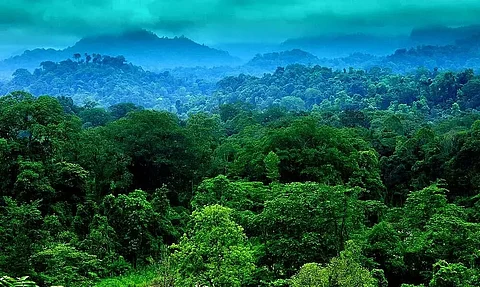
- Home
- Live Blog
- Breaking News
- Top Headlines
- Cities
- NE News
- Sentinel Media
- Sports
- Education
- Jobs

Guwahati:
In a recent cabinet meeting, the Assam government agreed to designate Dehing Patkai Wildlife Sanctuary as the state's seventh national park. The Assam Valley's "last remaining stretches" of tropical wet evergreen forests have been designated as the state's seventh national park. As of the present, Assam has five national parks: Kaziranga, Orang, Manas, Nameri, and Dibru-Saikhowa.
On June 5, Assam Chief Minister Himanta Biswa Sarma announced the designation of Raimona Sanctuary as a National Park. Apart from these six, Assam now has another National Park, Dehing Patkai, which was declared today. With seven national parks, Assam presently ranks third among Indian states in terms of the number of national parks. With ten national parks, Madhya Pradesh tops the list, while Andaman and Nicobar Islands come in second with nine.
There are 105 national parks in India, covering 44,000 acres of space.
The 234.26-square-kilometer Dehing Patkai, which straddles eastern Assam's Dibrugarh and Tinsukia districts, is a prominent elephant habitat, with 310 kinds of butterflies documented there. The park is home to 47 reptile and mammal species, including the tiger and clouded leopard.
"These two inclusions will make a good impact on Assam tourism," asserted Forest and Environment minister Parimal Suklabaidya.
Suklabaidya added further, "Dehing Patkai was of 111 sq km earlier. We have included Burhi dihing nad Tirak river in its periphery and made it of 234.25 sq km."
Last year, the government was critisized for allegedly attempting to sell Dehing-Patkai in order to open it up for coal mining as The National Board for Wildlife's Standing Committee discussed a proposal to use 98.59 hectares of land from the Dehing Phatkai elephant reserve forest for a coal-mining project. The decision sparked much uproar nationwide yet, the agreement was upheld.
Dehing Patkai, which came under scrutiny a year ago for illicit coal mining in the area, includes the former Dehing Patkai Wildlife Sanctuary, the Jeypore Reserve Forest, and the western block of the Upper Dihing Reserve Forest.
Raimona, on the other hand, will be handled by the Bodoland Territorial Council's Kachugaon Forest Division. The region was one of the state's oldest reserve woods. Raimona is bordered to the west by the Buxa Tiger Reserve in West Bengal, to the north by the Phipsoo Wildlife Sanctuary in Bhutan, and to the east by the first addition to Manas National Park.
Raimona, which has 11 different forest types and subtypes, is home to the golden langur, elephant, tiger, clouded leopard, and Indian gaur, as well as various orchid species, more than 150 species of butterflies, 170 species of birds, and 380 kinds of plants.
"Conservation of this area shall provide water security to more than 20 lakh people downstream in Kokrajhar and Dhubri district," Mr. Suklabaidya said. Notably, the state's four tiger reserves were recently accredited by the National Committee of Conservation Assured Tiger Standards (CATS).
These four tiger reserves are named Kaziranga, Manas, Nameri, and Orang. Nameri also earned an International Award for tiger conservation.